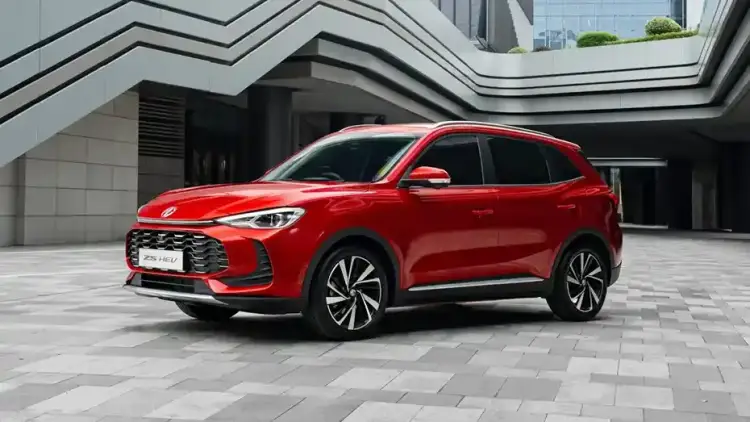- A Motorcade That Turns Heads
- The Royal Hongqi N701: Key Specifications
- Why Choose Hongqi?
- How It Differs From Traditional Fleet Staples
- Strategic Gains for Saudi Arabia
- Challenges on the Horizon
- Regional Luxury Ripples
A head of state’s official car choice is never merely personal; it carries political, economic, and cultural signals heard around the world. When Saudi Crown Prince Mohammed bin Salman added a Chinese-built limousine—the Hongqi N701—to his official fleet, he did more than sample a new flavor of luxury. The move showcased the Kingdom’s openness to emerging industrial powers and highlighted its expanding strategic partnership with Beijing. How did Hongqi muscle its way into a royal garage long dominated by German and Japanese flagships? And what does this decision mean for the regional luxury-car market and Saudi Arabia’s Vision 2030 ambitions?

A Motorcade That Turns Heads
Picture a warm Riyadh evening. Crowds gather outside Al-Yamamah Palace, waiting for the royal convoy to pass. At its head glides a crimson Hongqi N701, its gold-rimmed “Flying Flag” grille gleaming under palace lights. A woman whispers to her husband, “Is that really Chinese?” He nods: “Yes—and tonight it rides beside Mercedes and Lexus as a peer, not a guest.” The scene is rich with symbolism: a brand that once ferried Chinese leaders in the 1960s now escorts Saudi royalty, mirroring today’s geopolitical and economic realignments.
The Royal Hongqi N701: Key Specifications
Engine: 3.0-liter twin-turbo V6
Output: 360 hp
Drivetrain: Permanent AWD with advanced automatic transmission
Chassis Tech: Self-leveling air suspension for silk-smooth progress over Riyadh’s varied roads
Cabin Appointments: Nappa-leather executive seats with massage, heating, and cooling; rear touch-screens for lighting, climate, and audio; heavy acoustic insulation that creates a private “quiet bubble”
Safety Suite: Lane-keeping radar, autonomous emergency braking, 360-degree cameras, full curtain airbags
Why Choose Hongqi?
Political and Economic Symbolism
Selecting a Chinese limousine follows multi-billion-dollar Saudi-Chinese investment deals signed during President Xi’s 2022 visit, cementing deepening bilateral ties.Redefining Luxury
The decision proves that prestige is no longer confined to “Made in Stuttgart” or “Made in Detroit.” Diverse sources of opulence can become soft-power assets.Boosting Local Confidence
By adopting an advanced Asian flagship, the Crown Prince lowers psychological barriers for affluent Saudis considering Chinese brands—crucial as the Kingdom launches local marques like Ceer and partners with Lucid.

How It Differs From Traditional Fleet Staples
Strategic Gains for Saudi Arabia
Supplier Diversification China’s presence eases European dominance, giving Riyadh broader bargaining power.
Innovation Image A Chinese car in a royal convoy signals to local consumers that Asian products can rival Western icons, spurring all brands to raise their game.
Vision 2030 Alignment The move echoes plans to transfer advanced technologies and develop domestic auto production zones such as NEOM.
Implicit Marketing High-profile exposure boosts Hongqi’s Gulf profile, attracting new dealerships and creating investment and job opportunities.
Challenges on the Horizon
After-Sales Support Maintaining royal-grade service will require expanding parts networks and training Gulf technicians to Chinese standards.
Brand Perception Despite its storied history in China, Hongqi must build trust among Saudi high-end buyers unfamiliar with the marque.
Performance Comparison Public scrutiny will pit the N701 against German and Japanese benchmarks; Hongqi must excel in daily Saudi driving, not just ceremonial parades.
Regional Luxury Ripples
A Chinese limo in an official convoy shakes up the luxury market and spurs rivals to sweeten features or rethink pricing:
Anticipated sales uptick for models like the Hongqi H9 and E-HS9 as Gulf showrooms leverage the royal spotlight.
Other Chinese brands—Ora, Tank, Nio—are likely to seek Saudi distribution deals.
Expanded after-sales infrastructure could create thousands of skilled jobs.
Competition to develop Saudi-built luxury EVs intensifies, especially amid announced joint ventures for NEOM and Jubail Industrial City.
The Hongqi N701 has seized the spotlight not merely for its bold design and sumptuous cabin but for what it represents: a new chapter in Sino-Saudi relations and in Middle Eastern luxury motoring. As the Kingdom redraws its industrial and prestige supply chains, this flagship sedan announces that German and Japanese dominance will no longer go unchallenged. With the world watching, “Made in China” has risen to royal status, ushering in a fresh definition of power and elegance across the region.













